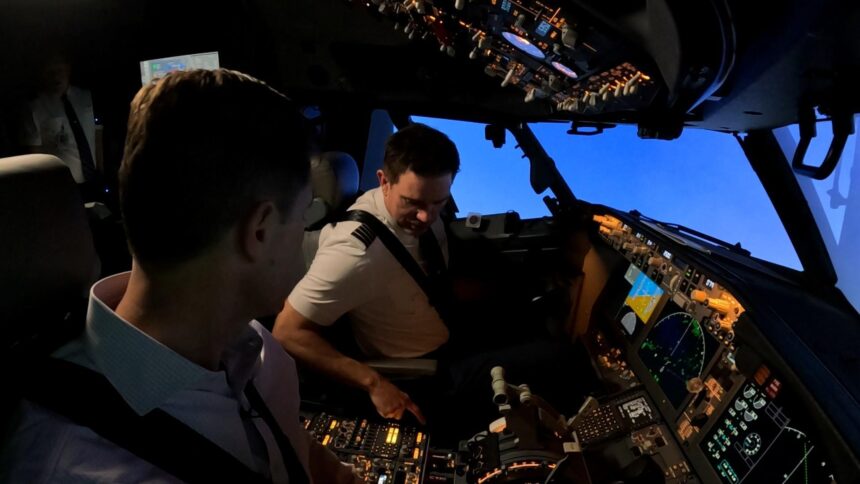Understanding Pilot Training and Air Traffic Control Disruptions
The recent spate of air traffic control outages in major U.S. cities such as Newark, Denver, and Jacksonville has cast a spotlight on the vulnerabilities of the nation’s aging air traffic control system. With the Fourth of July travel period fast approaching, the Transportation Security Administration (TSA) anticipates screening over 18.5 million passengers in just one week.
A Closer Look at Pilot Training
During a demonstration inside a flight simulator resembling a Boeing 737 Max, Captain Miles Morgan, who manages United Airlines’ flight training center in Denver, emphasized the critical importance of layered training in handling air traffic control (ATC) failures. “Even before a pilot joins an airline, they learn how to manage communication losses with ATC,” he noted while simulating a flight departure from Newark Liberty Airport.
As part of standard protocol, pilots tune into specific radio frequencies to communicate with air traffic control. “If communication drops mid-flight, I immediately switch to the last frequency used,” Morgan explained, showcasing the seamless transition pilots make to maintain contact with ATC despite technical difficulties.
Emergency Communication Systems
Moreover, pilots have access to multiple channels for emergency communication. A second radio is dedicated to emergency channels that all relevant air traffic facilities and aircraft can monitor. In the unlikely event of a complete communications failure, a text messaging system enables pilots to contact ground crews directly. Additionally, transponders equipped on aircraft can be switched to transmit a special code (7600) that alerts controllers to communication issues.
“This tells air traffic control that we’ve lost communication, prompting them to take necessary actions to separate aircraft in the vicinity,” explained Morgan. To further ensure safety, modern airliners are fitted with Traffic Collision Avoidance Systems (TCAS), which actively scans for nearby aircraft and instructs pilots on necessary maneuvers.
Managing Incidents Effectively
Transportation Secretary Sean Duffy recently spoke about the importance of pilot situational awareness during ATC outages. “When communication is lost, pilots are trained to seek contact with alternate facilities like TRACON or local towers,” he said. The aim is to maintain safety even when disruptions occur, although passengers might experience delays as aircraft traffic is carefully managed.
Delays are often a byproduct of communications issues as ATC exercises caution. When disruptions occur, air traffic controllers limit traffic in affected areas, ensuring the safety of all flights while still utilizing backup communication methods from other operational centers.
Recent Outage Investigations
The Federal Aviation Administration is currently investigating a series of air traffic control outages that have taken place since April, particularly focusing on the Philadelphia air traffic control center, which oversees Newark Liberty International Airport. Notably, communication failures were reported in April when controllers experienced a loss of contact for 90 seconds during critical flight operations. Denver’s center faced a partial outage in May, impacting a significant portion of airspace.
Key Statistics on Air Traffic Control and Travel
| Event | Details |
|---|---|
| TSA Passenger Projections | 18.5 million travelers expected over Fourth of July holiday |
| Recent Control Center Outages | Communications lost for 90 seconds in Philadelphia and partial outages in Denver |
| Federal Response | Investigation initiated by the FAA regarding multiple outages |
As the peak summer travel season intensifies, understanding the training and safety protocols pilots adhere to during ATC disruptions remains crucial in ensuring passenger safety. Although passengers may face delays, the industry’s commitment to safe travel remains unwavering, reinforced by thorough training and advanced technology.




